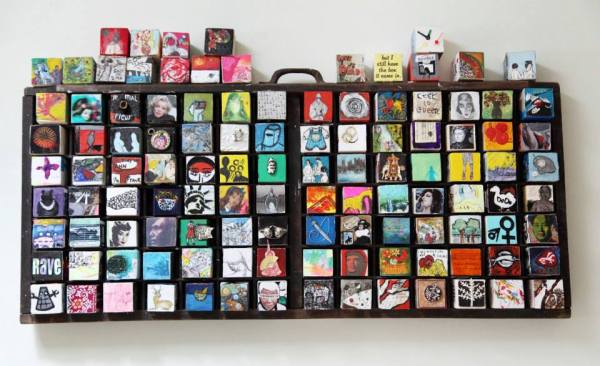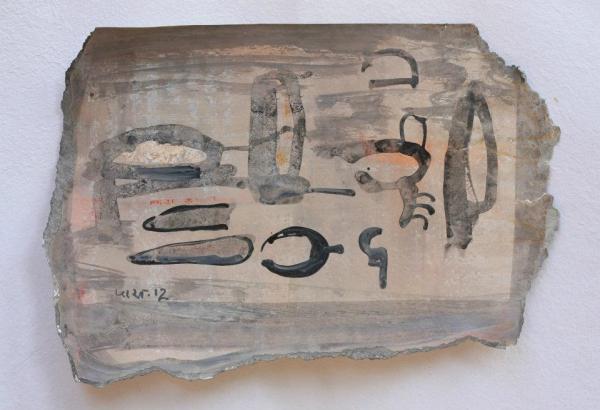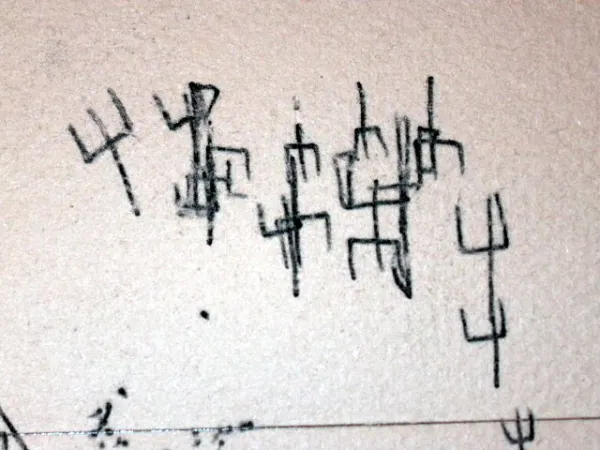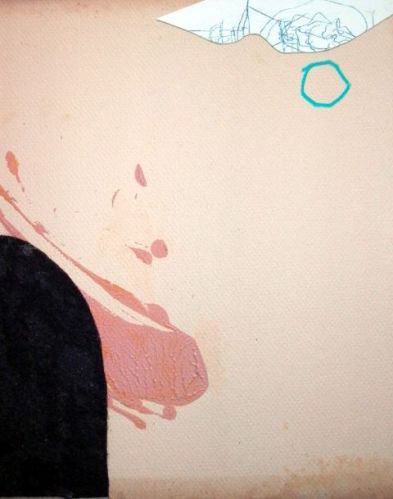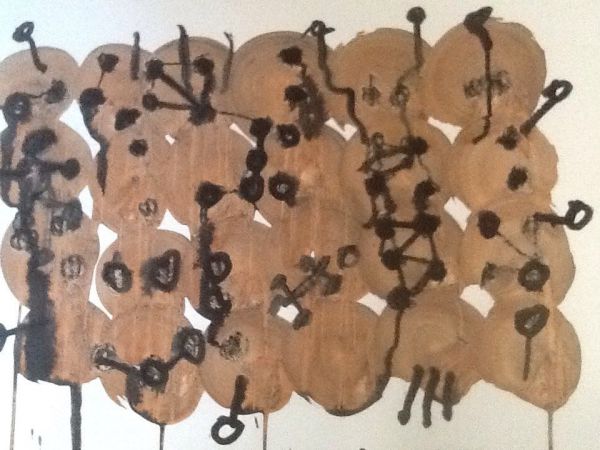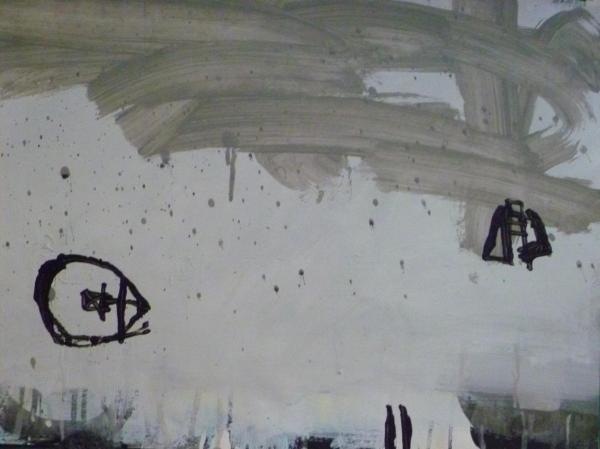The Drawing Box – International Art Exhibitions
DRAWING BOX: 2013
It has a page on Facebook without which it could not be what it is.
Soon after her return from her residency in India, Diane Henshaw together with Andrew Crane, John Crabtree, and Patil Rajendra, started the first Drawing Box that opened in Mumbai (2013). Then it travelled to Belfast (Crescent Arts Centre, April 2013), Enniskillen (The Higher Bridges Gallery, May 2013) and Dublin (Ranelagh Arts Centre July-August 2013). Some future venues are planned in Malaysia, Philippines, Berlin, Lithuania, Slovakia, South Africa, USA, England and Italy.
DB exists because artists love to draw, are prepared to pay the postage, and the hosts are taking on full responsibility for occupying the space offered by the venue. Not in a small way, it exists because of Facebook’s capacity to revitalise the idea of mail art. Drawing Box differs from the Mail Art of the 1970s and 1980s not only due to new technology, but also the governing rules: each artist may submit only five drawings in one format (A5) and can either let the once made choice travel from venue to venue, or submit new work, especially if there was a sale. Moreover, artists may submit their drawings on the Drawing Box Facebook page only, without posting them to exhibitions organised by volunteering hosts in all or any of the listed venues.
Drawing Box further differs from the earlier Mail Art by not having a militant attitude to institutions. Rather, it follows Joseph Beuys’s advice to artists to learn to use any available resources. Northern Ireland has a respectable tradition of this strategy. The earliest were Available Resources in June-July 1991 in Derry-Londonderry, then 25 years ago started Catalyst Arts Belfast which is still vibrant and strong, and more recently Delawab, Satis House and Household yearly event.
Drawing Box puts its trust into the artworks availability to different audiences.
It has no one curator and one venue. It is engaged in enhancing freedom for artist’s determining what they exhibit and where. Its digital (Facebook) branch allows for spontaneous comments of viewers, in some cases a hundred about one work of art. That luxury is denied in the established models. Yes, the weakness is that visitors of the Facebook page respond to a reproduction, their experience is nevertheless real. I have no scientific evidence about the influence of lens based media on the visual perception, nevertheless, films, video, television, newsprint, photo print are forging quantitatively greater part of our experience with visual art and visual thinking than do encounters with the originals in galleries and museums. I am not proposing that one can replace the other, rather I sense a complementary relationship between them.
The DB hosts at Mumbai (Feb-March 2013) published a handsome catalogue, displayed each artist’s submission on a board, and generally instilled the exquisite sensual beauty of attention to detail, material and atmosphere. The subsequent versions were documented online only. Let me introduce the four artists who hatched the idea.

Patil Rajendra is a painter, teacher and philosopher. I have noticed, in his paintings, the scale of hues like Indian spices, saturating the surface to the highest possible temperature while avoiding any agitation.
Generously, he regularly feeds his new work onto his Facebook page (Patil Rajendra Mumbai Maharashtra India) offering continuity of thought and comparison. Recent images prefer a dramatic state of mind, incisive conflict of motifs, at times observed, at times invented, floating in front of the abstract ground. Rajendra does not give titles, dates and sizes.
Andrew Crane trained in graphic design and now allows his paintings and drawings to remember that by embracing fragmented letters and numbers over an abstract ground.

He wrote “ I see my paintings as ‘philosophical ramblings’ in paint and cement” He refers to the method that he developed using cement over canvas as a ground cherishing the material’s character, its stubborn refusal to be as smooth as plaster or gesso.

Crane compares his images to koans – puzzles that inspire meditative state of mind.
Diane Henshaw was a devotee of paper and line ever since I met her during her Master Degree study at the University of Ulster in Belfast.
Anchoring drawings in music, musical notation included,
she invites interpretative attention to her images as compositions of full and empty motifs, of linear and curvilinear, of contrasting hues or a hue modulated by gradual tonality.
Each composition offers several states of mind at once. Strongly defined motifs insist on their visual supremacy refusing to submit to any story telling. Indeed like music. Kandinsky used to envy that freedom from narratives.

John Crabtree explores variations on a theme, as if shadowing the master of the Fugue.
Without intending it, he shares with J S Bach exactitude of a scale which gets almost simultaneously dissolved in a torrent of passion governed by chance and instinct. It is the art of John Cage and Morton Feldman that invites Crabtree to feel free, to be free, to follow deeply held beliefs. Cherishing the power of ambiguity the space is defined yet not understandable. He wrote: “I paint to dis-arm myself”. Amazingly, the indetermined characters of blobs, squiggles, signs, imprints, collage etc unconditionally direct the viewing to what he surrended to.
The latest statistics sent to me by Diane Henshaw lists 108 artists actively taking part in Drawing Box. I struggle to characterised it: it is free of the power of curatorship, of ideology, of celebrities, of the pressures and advantages of dealerships, grants, subsidies etc. It is freely supported by the artists from all over the globe with quiet confidence and mute enthusiasm that art will find its audience in direct encounters as well as in the mediated ones. The spirit of Facebook forges gentle positive connections without pressure of competitiveness.
Drawing Box is like a diligent pollinator evoking a change from isolation to an exchange capable of forming an encounter based on free will. Good fortune!

